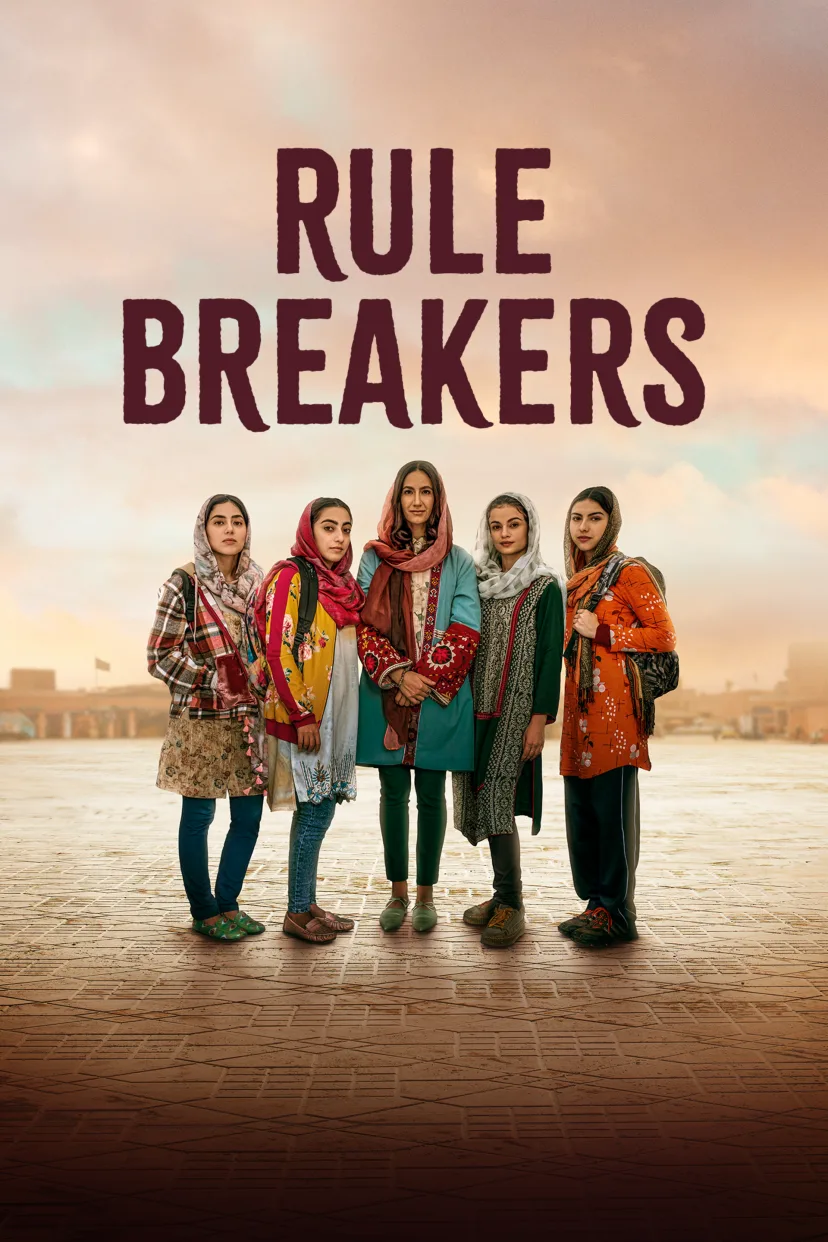Movie rule is a concept that every film enthusiast should know about. It’s not just about watching movies; it’s about understanding the hidden mechanics behind the magic of cinema. From production to distribution, these rules shape the way films are made and consumed. Whether you’re a filmmaker, a critic, or just someone who loves movies, knowing these rules can enhance your experience. So, buckle up, because we’re diving deep into the world of movie rules!
You might be wondering why movie rules even matter. Well, think about it this way: every industry has its own set of guidelines that help it run smoothly. In the film world, these rules ensure that everything from casting to box office sales follows a certain structure. Without them, the industry would be chaotic. So, if you want to understand how movies are made and why they’re so successful, you need to know the rules.
Now, before we get too deep into the nitty-gritty, let’s establish one thing: movie rules aren’t just about the technical stuff. They also cover the creative aspects, like storytelling, character development, and even marketing strategies. It’s all interconnected, and once you grasp the bigger picture, you’ll see how these rules influence every aspect of the film industry. Ready to learn more? Let’s go!
Read also:Hd Hub 4 You Movies Your Ultimate Destination For Movie Entertainment
Here’s the table of contents to help you navigate through this guide:
- What Are Movie Rules?
- History of Movie Rules
- Types of Movie Rules
- Importance of Movie Rules
- Movie Rules in Production
- Movie Rules in Marketing
- Movie Rules and Technology
- Movie Rules and Audience
- Breaking Movie Rules
- Future of Movie Rules
What Are Movie Rules?
So, what exactly are movie rules? In simple terms, they are the guidelines that govern the film industry. These rules can range from technical regulations, like copyright laws, to creative principles, like storytelling techniques. Think of them as the blueprint for making movies. Without these rules, filmmakers wouldn’t know where to start, and audiences might not have the same level of entertainment.
Movie rules are not just about enforcing laws; they’re also about setting standards. For example, there are rules about how long a movie should be, how much dialogue is too much, and even how to structure a plot. These rules help filmmakers create films that resonate with audiences on a global scale. And let’s be honest, who doesn’t love a well-crafted movie?
Why Do Movie Rules Exist?
The existence of movie rules is rooted in the need for consistency and quality. Imagine watching a movie where the plot jumps around randomly, or the characters don’t make sense. It would be a disaster, right? Movie rules help prevent these issues by providing a framework for filmmakers to follow. They ensure that every film has a beginning, middle, and end, and that the characters are well-developed and relatable.
Moreover, movie rules help protect the rights of filmmakers and studios. Copyright laws, for instance, ensure that original works are protected from unauthorized use. This encourages creativity and innovation in the industry, as filmmakers know their work is safe from plagiarism.
History of Movie Rules
The history of movie rules dates back to the early days of cinema. When movies first emerged in the late 19th century, there were no established rules. Filmmakers experimented with different techniques, and the industry evolved rapidly. However, as the industry grew, the need for rules became apparent.
Read also:3movierulz Kannada The Ultimate Guide To Unlocking Your Movie Paradise
In the 1920s, the Hays Code was introduced to regulate the content of movies. This code set moral guidelines for filmmakers, dictating what was acceptable and what wasn’t. While it may seem restrictive by today’s standards, the Hays Code played a crucial role in shaping the film industry as we know it.
Evolution of Movie Rules
Over the years, movie rules have evolved to keep up with changing times. The introduction of new technologies, like CGI and digital effects, has led to the creation of new rules. For example, there are now rules about how much CGI can be used in a film without compromising the story. Similarly, the rise of streaming platforms has led to new rules about distribution and licensing.
Today, movie rules are more comprehensive than ever, covering everything from production to post-production. They ensure that films are not only entertaining but also ethical and socially responsible.
Types of Movie Rules
Movie rules can be broadly categorized into three types: technical, creative, and ethical. Each type serves a specific purpose and contributes to the overall success of a film.
Technical Rules
Technical rules govern the physical aspects of filmmaking, such as camera angles, lighting, and sound. For example, there are rules about how to frame a shot to create a certain mood or how to use lighting to highlight a character’s emotions. These rules help filmmakers create visually stunning films that captivate audiences.
Creative Rules
Creative rules focus on the storytelling aspect of filmmaking. They include guidelines for plot structure, character development, and dialogue. For instance, there are rules about how to build tension in a scene or how to create a memorable protagonist. These rules help filmmakers craft stories that resonate with audiences on an emotional level.
Ethical Rules
Ethical rules ensure that films are made responsibly and respectfully. They cover issues like representation, diversity, and cultural sensitivity. For example, there are rules about how to depict certain cultures or historical events without offending or misrepresenting them. These rules help promote inclusivity and understanding in the film industry.
Importance of Movie Rules
The importance of movie rules cannot be overstated. They play a vital role in shaping the film industry and ensuring its success. Without these rules, the industry would be chaotic and unpredictable. Here are some key reasons why movie rules matter:
- Consistency: Movie rules provide a consistent framework for filmmakers to follow, ensuring that every film meets a certain standard of quality.
- Innovation: By setting boundaries, movie rules encourage filmmakers to push the limits of creativity and innovation.
- Protection: Movie rules protect the rights of filmmakers and studios, ensuring that original works are respected and valued.
- Respect: Ethical movie rules promote respect and understanding, helping to create films that are inclusive and socially responsible.
Movie Rules in Production
During the production phase, movie rules are crucial in ensuring that everything runs smoothly. From pre-production to post-production, filmmakers rely on these rules to guide them through the process. Here are some key movie rules in production:
- Scriptwriting: There are rules about how to structure a script, including the use of acts and scenes.
- Directing: Directors follow rules about how to block scenes and direct actors.
- Cinematography: Cinematographers adhere to rules about camera angles, lighting, and framing.
Challenges in Production
Despite the importance of movie rules, there are challenges in following them. For example, some filmmakers may feel constrained by the rules and want to experiment with new techniques. However, it’s important to strike a balance between innovation and adherence to rules to create successful films.
Movie Rules in Marketing
Marketing is a crucial aspect of the film industry, and movie rules play a significant role in this area. From trailers to posters, every aspect of marketing is governed by rules that ensure the film is promoted effectively. Here are some key movie rules in marketing:
- Trailers: There are rules about how long a trailer should be and what scenes to include.
- Posters: Designers follow rules about how to create eye-catching posters that capture the essence of the film.
- Social Media: Movie rules dictate how to use social media platforms to engage with audiences and build hype.
Influence of Marketing on Box Office Success
The effectiveness of marketing can greatly influence a film’s box office success. By following movie rules in marketing, filmmakers can create campaigns that resonate with audiences and drive ticket sales. It’s all about creating a buzz and generating interest in the film.
Movie Rules and Technology
Technology has revolutionized the film industry, and with it comes new movie rules. From CGI to virtual reality, filmmakers are constantly exploring new ways to enhance the movie-watching experience. Here are some key movie rules related to technology:
- CGI Usage: There are rules about how much CGI can be used without overshadowing the story.
- Virtual Reality: Filmmakers follow rules about how to create immersive VR experiences that complement the film.
- Streaming Platforms: New rules have emerged to govern the distribution of films on streaming platforms.
Impact of Technology on Filmmaking
Technology has had a profound impact on filmmaking, allowing for greater creativity and innovation. However, it also presents challenges, such as the need to balance technology with storytelling. By following movie rules related to technology, filmmakers can harness its power while maintaining the integrity of their films.
Movie Rules and Audience
The relationship between movie rules and the audience is crucial. After all, the audience is the reason films are made. Movie rules help filmmakers create films that resonate with audiences on a personal level. Here are some key ways movie rules affect the audience:
- Engagement: Movie rules help create films that engage audiences emotionally and intellectually.
- Expectations: Audiences have certain expectations when watching a film, and movie rules help meet those expectations.
- Experience: Movie rules enhance the overall movie-watching experience, making it more enjoyable and memorable.
Audience Feedback and Movie Rules
Audience feedback plays a significant role in shaping movie rules. Filmmakers often adjust their approach based on audience reactions, leading to the evolution of rules over time. It’s a dynamic relationship that ensures the industry remains relevant and engaging.
Breaking Movie Rules
While movie rules are important, sometimes breaking them can lead to groundbreaking films. Filmmakers who dare to challenge the status quo often create works that redefine the industry. Here are some examples of films that broke movie rules:
- Pulp Fiction: Quentin Tarantino’s masterpiece broke traditional storytelling rules with its non-linear narrative.
- Inception: Christopher Nolan pushed the boundaries of storytelling with its complex, multi-layered plot.
- Parasite: Bong Joon-ho’s film broke cultural and genre barriers, winning multiple awards and accolades.
When to Break the Rules
Breaking movie rules should be done with purpose and intention. It’s not about rebellion for the sake of rebellion; it’s about pushing the boundaries of creativity and innovation. Filmmakers who break rules effectively often do so because they understand the rules inside and out, allowing them to break them in a meaningful way.
Future of Movie Rules
The future of movie rules is exciting and unpredictable. As technology continues to evolve, so will the rules that govern the film industry. Here are some trends to watch out for:
- AI in Filmmaking: The rise of AI will likely lead to new rules about its use in filmmaking.
- Virtual Reality: As VR becomes more mainstream, new rules will emerge to govern its use in films.
- Sustainability: There will be a growing emphasis on ethical and sustainable filmmaking practices.
Preparing for the Future
To prepare for the future, filmmakers should stay informed about emerging trends and technologies. By embracing change and adapting to new rules, they can continue to create films that capt


